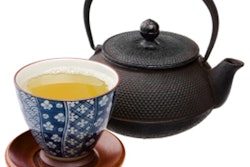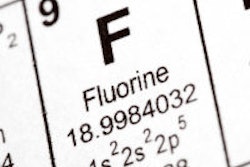Drinking certain lower-cost tea blends can push people's fluoride intake over daily recommended levels, increasing the risk of skeletal and dental illnesses, according to a study in Food Research International (May 2013, Vol. 51:2, pp. 564-570).
Researchers from the University of Derby compared fluoride levels in 38 tea products with each other and to the U.S. National Academy of Sciences' (NAS) daily dietary reference intake.
Using ion selective electrode analysis of the dry tea and the tea infusions brewed with boiling water for two minutes, the researchers compared the fluoride levels ingested by someone drinking the average daily intake of tea (4 cups).
The researchers discovered significant differences in fluoride levels when economy black tea blends from several supermarkets were compared with branded black tea blends, such as PG Tips, Twining's, and Typhoo; green tea blends, including Clipper Organic leaf and Green Twining's bags; pure blends such as Assam, Dilmah, and Ceylon; and Oolong and Pu'er blends from India and Sri Lanka, the researchers noted in a university news story.
Infusions of economy black tea blends were found to have the highest concentration of fluoride: an average of 6 mg/L. Infusions of green tea blends had the next highest concentrations, followed by branded black blends such as PG Tips, Twining's, and Typhoo with an average of 3.3 mg/L, then pure blends.
The NAS daily dietary reference intake is 4 mg of fluoride per day.
Oolong and Pu'er teas had the lowest concentrations of fluoride -- an average of 0.7 mg/L, or 10% to 16% of the daily reference intake.
Although fluoride is considered an essential micronutrient for human health for preventing caries and the promotion of healthy bone growth, excess fluoride can result in dental fluorosis, the mottling of tooth enamel, and skeletal fluorosis, the researchers noted.



















